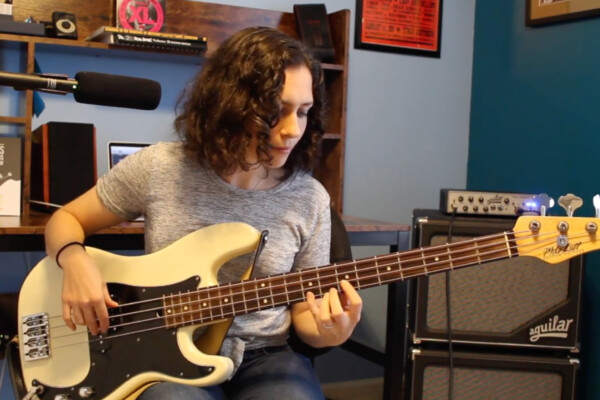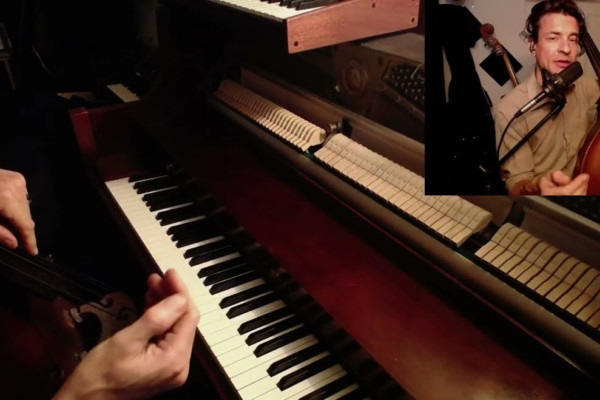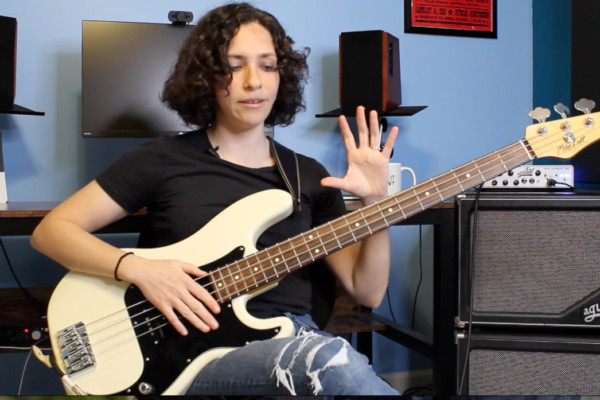The Lightbulb Moment: Key Change!
There comes a time in every player’s life when we listen to a song and are able to identify a perfectly executed lift in tonal center. The energy heightens, the chorus takes on a slightly new character, and the band keeps grooving with a new sense of intention. This extraordinary moment can only be one thing: a key change. Take it up a half step, ya’ll!
I remember the first time I recognized a key change. I was diligently working my way through the Blues Brothers 2000 soundtrack in an attempt to master R&B music (a decade later, and I’m still working on it). Wilson Pickett, Eddie Floyd, and Jonny Lang joined forces on the song “634-5789 (Soulsville, USA)”, bringing their distinctively gritty and incomparably soulful voices to the cast. After getting the bass line under my fingertips, I began to get comfortable playing the song. The bass line jumped from the root note to the 6th-5th-and 3rd scale degrees. I was able to move the fingering pattern from chord to chord, keeping the groove consistent while adhering to the progression.
Following the guitar solo, the choir of background vocals chanted “634-5789” over and over again. The third time, there was a change in the air; the vocals seemed to jump higher and the pattern that I played suddenly sounded dissonant. Desperately trying to figure out what changed, I moved my finger up one fret. There it was; the bass line, the vocals, the horns — everything — a half-step higher.
“What could this be?” I wondered. I consulted with my bass teacher during the following lesson and he nonchalantly pointed out:
“That’s just a key change; it happens all the time.”
Okay, okay, so maybe it does happen all the time, but it was new to me. Eventually I realized that the key change, or modulation, could be found in all styles of music. I began to hear them everywhere, from Sam and Dave’s “Soul Man” to Bon Jovi’s “Livin’ On A Prayer,” to Patsy Cline’s “Crazy.” I couldn’t make it through a Whitney Houston record without pointing out a few, and don’t even get me started on Mariah Carey’s greatest hits!
To make things even more exciting, I realized that the key change wasn’t limited to a half step. You could jump up a whole step, a minor third, and if you were over-achievers like The Eagles, you could even go up a fourth! Once I was able to recognize the key change, it made plenty of sense. Everything just moves up… the harmony, the melody, and the bass line, to whatever the new key is. The song seems a little bit brighter, a little bit more exciting, and it magically has the energy to continue for an extra chorus or two.
Furthermore, it’s a compositional technique that typically involves some other form of harmonic movement, such as a pivotal chord change to indicate the modulation. While the song will often jump up without warning, there’s usually a chord that signifies the transition, such as a #5th if you’re ascending a half-step or a #1 if you’re moving up a whole step. Composers discover creative ways to work in the key change, giving the players cues to move to the new tonal center. It is this combination of tricky and brilliant that makes songwriting a true art form and Brian Wilson a genius.
So, the next time you find yourself listening to the radio, learning a new song, or digging through your collection of 1990’s country records, keep your ears open for that catchy little lift.
Ryan Madora is a professional bass player, author, and educator living in Nashville, TN. In addition to touring and session work, she teaches private lessons and masterclasses to students of all levels. Visit her website to learn more!



